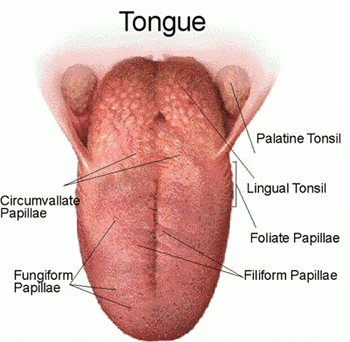Two ways music choice can influence your wine tasting experience

Wine color or the glass shape can change your wine appreciation. What about music choice at a wine event?
This is what a research team from Oxford University in the UK decided to investigate in two studies recently published in scientific journals.
In the first study, they hypothesized that wine professionals were immune to distraction such as ambient music; they tested their assumption at the International Cool Climate Symposium hosted in UK in 2016.
In the second study, the same team used a more controlled research design and had a sensory panel assess the effect of music choice on the temporal perception of sweetness and sourness in the same wine.
Let’s discover what they found out.
Music choice could increase the liking of a wine
Study 1: Assessing the influence of music on wine perception among wine professionals
Two white wines (one fruity and zesty, i.e. expected more sour; the other off-dry with ripe fruit notes, i.e. expected sweeter) were evaluated by 154 wine professionals in two conditions: (1) when listening to a “sweet” music tune (with consonant harmony) or (2) a “sour” music tune (with dissonant harmony). The researchers explained that these two music choices were created on purpose and had previously been tested to be matched significantly with sweet and sour solutions respectively.
Listen to the sweet and sour music
At the wine tasting event, the researchers were able to balance the presentation order of the two wines, however they could not change the order of the music tunes. Every participant started with the sweet music and then the sour music. This is a possible bias in the results; starting with the more melodic tune may have artificially increased participants’ liking of the first wine they tasted.
The wine professionals were asked to assess each wine on several criteria:
- Describe the top three flavor attributes,
- Rate on a 0-10 point scale the perceived intensity of sweetness and sourness,
- Rate your overall liking.

Results showed that the sweet music made participants give a higher liking score to the wines, however there was no statistical difference between the two wines in liking ratings. As stated above, these results may be due to the fact that the sweet music was played first and the sour music second. Other sensory research studies have shown many times that the first wine in a series is always rated higher in liking. This was also true in this case for wine professionals.
Interestingly, the sour music made the sour wine more likable to participants. Personally this sour music made my teeth grind and I doubt it would make me appreciate more a sour wine like a Muscadet. Well, I should try.
The sweet music also made the two wines perceived sweeter than with the sour music.
The researchers have conducted another study to look specifically at how music can impact taste perceptions.
Music choice can impact the perceived sweetness and sourness of a wine
Study 2: Assessing the impact of music on basic taste perception using time intensity analysis
This time the British researchers partnered with an Argentinian team and used their sensory facility to conduct thi particular experiment.
The hypothesis this time is that the perceived taste intensity of the wine changes as the music changes.
21 tasters were recruited from the University campus. The authors did not indicate if these tasters were trained to the Time-Intensity method, which is quite an unusual task for novices.
The participants tasted one same wine, an off-dry and low alcohol Chenin blanc, in two conditions: First assessing the wine with one music tune for 15 seconds and the second tune for the remaining 15 seconds. The overall evaluation of the wine in mouth was therefore 30 seconds.
The music choice was similar to the first experiment, with a tune evoking sweetness and the other one evoking sourness. It’s not clear if the tunes are exactly the same as in the first study described above.

The findings confirmed the researchers’ assumption. Taste perception changed with the music choice.
The perceived sweetness of the Chenin blanc decreased when the music sequence went from sweet to sour. The perceived sourness increased when the music sequence went from sweet to sour and decreased when it went from sour to sweet. Amazing!
The researchers wondered, however, if these effects on perceived taste intensities were linked to a cognitive integration between the sound and taste functions in the brain. Another hypothesis is that these effects are simply due to the integration between wine pleasantness and music. They suggested to replicate the research with fMRI and observe activity changes in the primary cortex of the tasters. Hmm…not easy to accomplish.
It is true that the music choices were designed music tunes, well tested to correlate with particular taste attributes in solutions.
In real life, the music played on the radio is not designed as such and the effect of music genres on wine tasting experiences can be debatable.
However, previous research has shown that music choice could impact wine shoppers in a retail environment. French wine sales outperformed German wine sales when a French music theme was played in a supermarket and more German wines were sold when a German music theme was on.
Therefore, music choice may actually play some roles in our wine appreciation.
References of the publications
Wang Q(Janice), Spence C. Assessing the influence of music on wine perception among wine professionals. Food Sci Nutr. 2018;6:295–301. https://doi.org/10.1002/fsn3.554
Qian Janice Wang, Bruno Mesz, and Charles Spence. 2017. Assessing theImpact of Music on Basic Taste Perception using Time IntensityAnalysis. In Proceedings of 2nd ACM SIGCHI International Workshop on Multisensory Approaches to Human-Food Interaction (MHFI’17). ACM, New York, NY, USA, 5 pages - https://doi.org/10.1145/3141788.3141792
North, Adrian C., Hargreaves, David J., McKendrick, Jennifer. The influence of in-store music on wine selections. Journal of Applied Psychology, Vol 84(2), Apr 1999, 271-276 http://psycnet.apa.org/buy/1999-13895-010
Home > Music Choice and Wine



